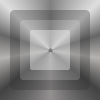HEY you're the ARSS guy!
-
- KVRist
- Topic Starter
- 167 posts since 12 May, 2012
i just made this connection, and it makes me feel even better about having bought your program. the first seeing the hal 9000 phenome drawing and registering the implications was like a firmware update for my cognizance. cheers!
-
- KVRian
- 1050 posts since 6 May, 2008 from Poland
Yes I am! The ARSS site has been full of links to the Photosounder site for like 6 years, I would have thought anyone would have made the connection by now  .
.
-
Rock Brentwood Rock Brentwood https://www.kvraudio.com/forum/memberlist.php?mode=viewprofile&u=373835
- KVRer
- 2 posts since 2 Feb, 2016
I may put up a revised version of ARSS on SourceForge under the original GNU copyleft; but with the library dependencies removed; possibly packaged with all my other stuff, now that I have the revision and everything else running on Linux. The result is a suite of command-line tools, that any developer may freely set up a GUI wrapper around (or incorporate into an already-existing wrapper like PhotoSounder). It's portable to any platform supporting a hosted ISO C99 implementation.
In the end, the use of FFTW didn't actually buy much. The revision (with FFTW removed) actually runs a little faster on my platform.
In time I will integrate and ARSS into a framework that also encapsulates the functions you have in your API. The stuff you're doing with using the sound to refine the graphics is something that's been on my mind for quite a while. I have a suite of routines that work directly on the graph which I may duplicate to create versions that work directly on the sound. Some routines (like voice-driven modulation or graph-driven enveloping) require both sound and graph, in the same way you're doing.
In the end, the use of FFTW didn't actually buy much. The revision (with FFTW removed) actually runs a little faster on my platform.
In time I will integrate and ARSS into a framework that also encapsulates the functions you have in your API. The stuff you're doing with using the sound to refine the graphics is something that's been on my mind for quite a while. I have a suite of routines that work directly on the graph which I may duplicate to create versions that work directly on the sound. Some routines (like voice-driven modulation or graph-driven enveloping) require both sound and graph, in the same way you're doing.
-
- KVRian
- 1050 posts since 6 May, 2008 from Poland
Isn't it a shame ARSS was always like 200 times slower than Photosounder though? 
Also the gain is wrong (too low I think) during analysis above a certain threshold. Just so you know
Also the gain is wrong (too low I think) during analysis above a certain threshold. Just so you know
-
- KVRist
- Topic Starter
- 167 posts since 12 May, 2012
question. i remember reading photosounder uses a bank of bandpass filters. does that mean it uses something like the wavelet transform?
-
- KVRian
- 1050 posts since 6 May, 2008 from Poland
I guess it's somewhat analogous, I don't remember the actual name of what I'm using though. S-transform or Q-transform, something like that.kamalmanzukie wrote:question. i remember reading photosounder uses a bank of bandpass filters. does that mean it uses something like the wavelet transform?
-
- KVRian
- 847 posts since 20 May, 2010
How is this different than:Rock Brentwood wrote:I may put up a revised version of ARSS on SourceForge under the original GNU copyleft; but with the library dependencies removed; possibly packaged with all my other stuff, now that I have the revision and everything else running on Linux. The result is a suite of command-line tools, that any developer may freely set up a GUI wrapper around (or incorporate into an already-existing wrapper like PhotoSounder). It's portable to any platform supporting a hosted ISO C99 implementation.
In the end, the use of FFTW didn't actually buy much. The revision (with FFTW removed) actually runs a little faster on my platform.
In time I will integrate and ARSS into a framework that also encapsulates the functions you have in your API. The stuff you're doing with using the sound to refine the graphics is something that's been on my mind for quite a while. I have a suite of routines that work directly on the graph which I may duplicate to create versions that work directly on the sound. Some routines (like voice-driven modulation or graph-driven enveloping) require both sound and graph, in the same way you're doing.
Audio Spectrograph and Re-Synthesis (ASPERES) ?
-
- KVRian
- 925 posts since 14 Dec, 2014
Seems ASPERES is just "a simple GUI" for ARSS.
https://code.google.com/archive/p/asperes/
Rock Brentwood's described plan is not a GUI, quite obviously.
https://code.google.com/archive/p/asperes/
Rock Brentwood's described plan is not a GUI, quite obviously.














